

















THE TECHNOLOGY:
Bio Total hip, the innovative device with the potential of repairing and replacing joints via the
ability of reaching joints through the femur neck. This will minimise the need to perform
Arthroplasty or Total Hip Prosthesis, as it will reshape and resurface the bone between joints.
The Bio Total Hip can perform arthroscopy without damaging articular capsules by
introducing mechanical or biological materials between joints. This less-invasive surgical
treatment will revolutionize major hip or joint surgery due to its minimalistic approach. This
will be beneficial to patients suffering early stages of Arthrosis or other damaged joints.
Bio-Total Hip incorporates ridges on the outer member surface which grasp the femur neck.
The inner member is telescopic and interlocks with the outer member via the ridges on its
external surface. At its joint end there is a mini head made from biological materials which sit
neatly within the joint and fill out the space between the joints.
This Mini head piece can be detached and replaced by an umbrella type function tool which expands and covers the head of
the femur which mechanically smooths out any imperfections allowing the joint to function as it did during its natural
movement.
Using a guiding X-ray device, a very small tunnel can be drilled and directed
towards the fovea of the ligamentum capitis or around the ligament of the
femur head. This will create a depression area in the insertion point of the
ligament. This ligament should then be removed in order to visualise the
entire hip joint by rotating, flexing or extending the limb.
The capitis femoris ligament ceases to provide blood to the head of the
femur from approximately the age of 16 years. From this time onwards it
becomes sclerotic, therefore loosing its flexibility and in some cases shrinks,
which retracts the head towards the Acetabulum and reduces hip joint
space, thus creating more pressure on the joint surface.
Could this abnormal rubbing of joint surface be what initiates the original
lesion in the articular cartilage due to wear and tear which eventually
destroys the joint.
The fevoea of the ligament is a depression that does not come into contact
with the Acetabulum wall, therefore after arthroscopy it is easier to cover
with bone pegs, then resurface the surface with biomaterials.
Arthroscopic devices inserted into the tunnel facilitate the visual inspection of
the joint and localize any damaged areas in the articular cartilage. This is
how it can be repaired with stem cells of cultivated cartilage. This is a common practice dentists perform on cavities.
The transcervical tunnel remains untouched, except at towards the end of the joint where bone pegs can be
inserted to block the perforated fovea.
In similar trans-cervical tunnels and in late osteoarthritis, its possible to insert bio materials to fill the joint space.
Bio Total Hip has an unrivalled technological advantage in comparison to current surgical procedures as it removes
only the neck and head of damaged joints throughout stages of articular cartilage damage by reshaping and
resurfacing damaged surfaces, thus keeping the capsule and blood supply intact.
Utilising a visual device to resurface the joint, the need for total hip, or joint
replacement surgery will be reduced dramatically. This micro surgical procedure creates a
new layer/surface to minimise friction to once again enable smooth gliding between the
joint surfaces. Flushing joints and removing foreign bodies will allow the repair of any
soft structural damage within joints and reshape the area. An inflatable bladder attached
to a telescopic member compresses the Bio material, then resurfaces the joint via an
adjustable telescopic mechanism with a profiled head .This will sit proud within the joint
and create an artificial space allowing free movement of arthritic joints.
This makes it possible to repair any osteosynthesis of a fractured femur neck, after the
joint turns arthritic. The joint space is accessible when the pre-inserted pin is removed,
which allows arthroscopic devices to tunnel further towards any diseased or damaged
areas. This is when repair can then be performed via the use of bio-materials.
The outer part of the device remains within the socket which is beneficial if access to the
joint is needed again. This process allows patients to be mobile soon after surgery, which
is not possible with today’s current procedures.




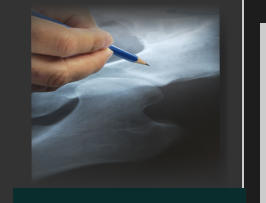
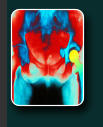


more info


more info
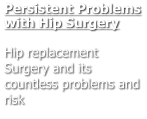

MORE PRECISION AND LESS DAMAGE..

Hip joint with ‘Bio Hip’ within the Acetabulum.
An Arthroscopic device with ceramic mini-
head inserted into the hip joint via a tunnel
drilled from below the greater Trochanter
which perforates the head of the femur to
reach the hip joint space...
Bio Total Hip has the
potential to be at the
forefront of
Arthrosis treatment
by treating the onset
of arthritic
problems. Bio Total
Hip will halt a worldwide chronic,
debilitating disease and its symptoms
of association.
The use of Bio materials via minimal
invasive surgery will reduce surgical
and hospital costs, greatly decrease
recovery time and minimise the amount
of drugs patients need until they reach
an ‘appropriate age’ to be granted Hip
replacement Surgery.

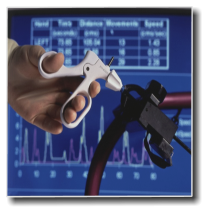

High Costs
The high costs of joint
prosthesis surgery is
draining the economical
resources of national
health services world
wide.
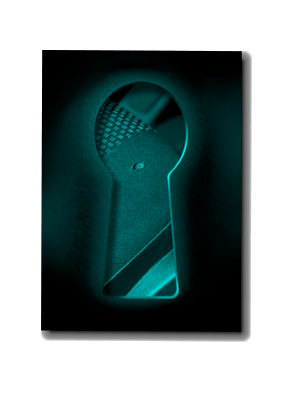

In 2009; Zimmer Co. (USA) tried to patent a similar Application
US2009/0043344.
The application was un-allowed after intellectual property rights confirmed
that www.totalbiohip.info was the original idea/ patent.
The use of Stem cells are making
headway in helping those suffering
with the onset of osteoporosis and
associated diseases.
Here is their latest 2017 article:
Stem Cell research

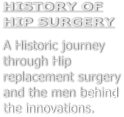

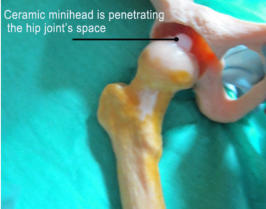
Bio Total Hip Patent:
Components:
PATENT GB:2344290
Is there a need to Expend $83 Billion on Prosthesis surgery?
In the
Journal of Arthritis
Dr. J. Cabrera gives insight into why the
costs associated with Joint prosthesis surgery are unnecessary and reveals innovative
solutions which showcase the way forward
…


®
